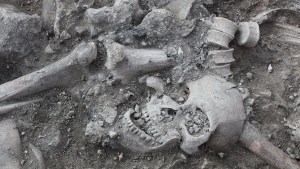Lenten Campaign 2025
This content is free of charge, as are all our articles.
Support us with a donation that is tax-deductible and enable us to continue to reach millions of readers.
We often hear how climate change is leaving a mark on glaciers, forests, and oceans. But the impact of the increased droughts, more severe floods, and stronger hurricanes is also leaving a mark on Catholic heritage around the world. From Spain to the Philippines, here is how extreme weather is changing our centuries-old heritage.
Spain
Last January, the Spanish autonomous region of Catalunya declared a state of emergency following months of severe drought that pushed authorities to ration water consumption in the area. As reservoirs across the countryside started to dry up, eerie remains of long-lost villages started to emerge.
The most iconic archeological discovery prompted by the drought is probably the 11th-century church of the village of Sant Romà de Sau, which had been completely submerged after the construction of a nearby dam in the 1960s.
Locals living in nearby communities were used to seeing the top of the church emerging from the reservoir surface during dry spells, but had never seen the entire structure out of the water.
The Philippines
A series of events similar to what led to the emergence of Spain’s Sant Romà de Sau’s church unfolded in the northern Philippines, where a prolonged drought in early 2024 led to the emergence of the old town of Pantabangan that had been submerged following the construction of a dam in the 1970s.
As the waters retreated, remains of submerged centuries-old tombstones, churches, and buildings have attracted groups of curious visitors to the area, with local fishermen redirecting their skills to ferry tourists across the waters to explore the recently resurfaced remains.
Mexico
Yet another severe spell of drought led to the recovery of Catholic heritage in the province of Quechula, Mexico. The stunning remains of the 16th-century church of Santiago, built by Dominican friars during Spanish rule, have resurfaced after a lack of rain and extreme heat led to unusually low water levels inside the Nezahualcoyotl reservoir. The reservoir had been formed following the construction of a dam on one of the tributaries of the river Grijava in 1966.
Despite spending nearly 60 years underwater, the 16th-century church, built under the supervision of Friar Bartolome de la Casas, is incredibly well preserved, displaying iconic elements of Spanish colonial style such as arched windows and white stucco walls.



